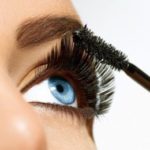The growing beard and designer stubble trend
There is no doubt facial hair is on trend in my part of the world at least. A quick look around my MBA classroom, TV shows and a recent series of interviews, was a clear testament that designer stubble and beards of various shapes, sizes and design are adorning an increasing number of male faces. From David Beckham, to Ryan Gosling, to my own son, facial hair seems to be the current look for many men.
Beards and Bias
For many years facial hair has almost considered a barrier to career progression for men. A 2003 University of Sao Paulo study showed 60% of personnel managers said they preferred clean-shaven men as a boss, compared to 15% who preferred a bearded boss. Frequently men are advised to shave a beard before an interview and to remain clean-shaven if hired. Certainly, the majority of CEOs seem not to be going for the beard trend.
But is this changing with a younger generation coming through the ranks and pushing back against bias? The former CEO of Apple, the late Steve Jobs was well known for sporting signature, designer stubble. Are these attitudes now out dated?
Would you advise a man to shave before an interview?
I wondered why
Obviously facial hair is a very evident gender differentiator (usually.) Although, somewhat ironically, there has apparently been a commensurate and veritable boom in the “manscaping” sector in recent times, as many men look for silky smoothness. I am of course only interested in boardroom implications.
Beards also have a number of obvious practical functions. They can protect men’s faces from the sun and from the cold. Men apparently spend 3350 hours in their lifetimes in an effort to have a hair free face. Having a beard saves time, shaving off (sorry) valuable minutes from a grooming routine. Although after reading this article on stubble maintenance with tips on exfoliating, gelling and shaping, perhaps not.
They can also be a sign of fitness and health, as well as being a badge of confidence and lack of fear. In battle, beards could be easily grabbed and the wearer pulled to the ground. City bankers be warned. So to sport a beard in armed combat was a signal of supreme assurance.
Status symbol
Beards increase age, social status and aggressiveness.
We all know teenage boys who tried to grow beards so they could get into bars and clubs without being carded. The girls wore make-up of course. However Research from Dixon and Vasey suggests that in certain cultures women and men perceive bearded faces to be older and associated with a higher social status, than the same men when clean-shaven. They did not necessarily find them more attractive, although in basic survival of the species terms, females prefer to mate with the most highly adorned males. The beard is definitely a male adornment.
Additionally, men wearing beards are perceived to be more angry than clean-shaven men. Anger is associated with preparedness to protect and negotiate at a time of conflict of interest. The anger face is according to criminologist Aaron Sell “a constellation of features, each of which makes you appear physically more formidable.”
What does this mean for corporate cultures?
Psychologist Robert Pellegrini (Psychology, 1973, Volume 10, No. 1,) says “Judging from the data in the present research, the male beard communicates a heroic image of independent, sturdy, and resourceful pioneer, ready, willing and able to do manly things.”
As the male face is prevalent in most of our senior echelons and corporate boards, the notion of the dominant, formidably bearded face, stands to become more deeply embedded. So with facial hair now back in fashion, what does that mean for corporate cultures? Will older leaders take up this new trend, or will they opt to stay with smooth chins and cheeks?
Is this trend a coincidence?
Occurring at a time where women probably for the first time in history are attempting to compete in the same arena as men, perhaps it shouldn’t be surprising.
This would be in line with other historical trends. According to Dr. Alun Wuthey an expert in medical history, the return of the beard to fashion in the late Victorian era could be attributed to a sociological and cultural shift. “Perhaps more importantly, though, women were beginning to find a voice and to offer a raft of entirely logical arguments against their continued subjection. How did men respond? By cultivating massive beards”
Interestingly Dan Stuart in Time suggests that this trend might have peaked. Clean shaven men could now be in the minority and will therefore be more visible to women.
Or is it all just a passing fashion fad?
I would be interested to hear your thoughts! Would you still advise a man to shave before an interview?
If you need help with interview preparation get in touch NOW





